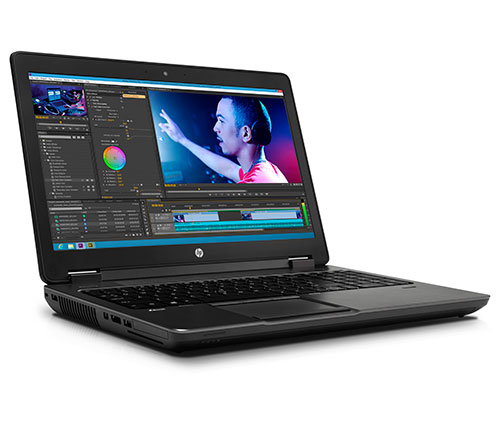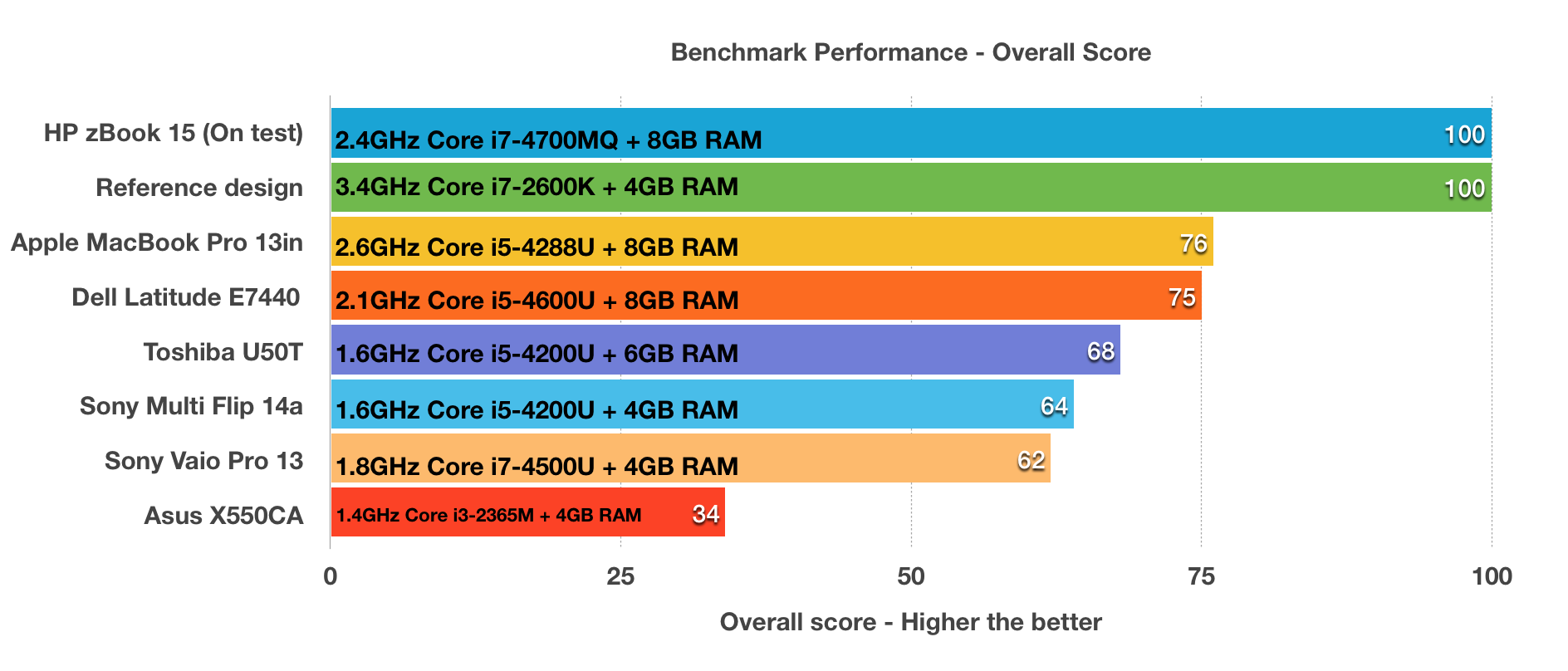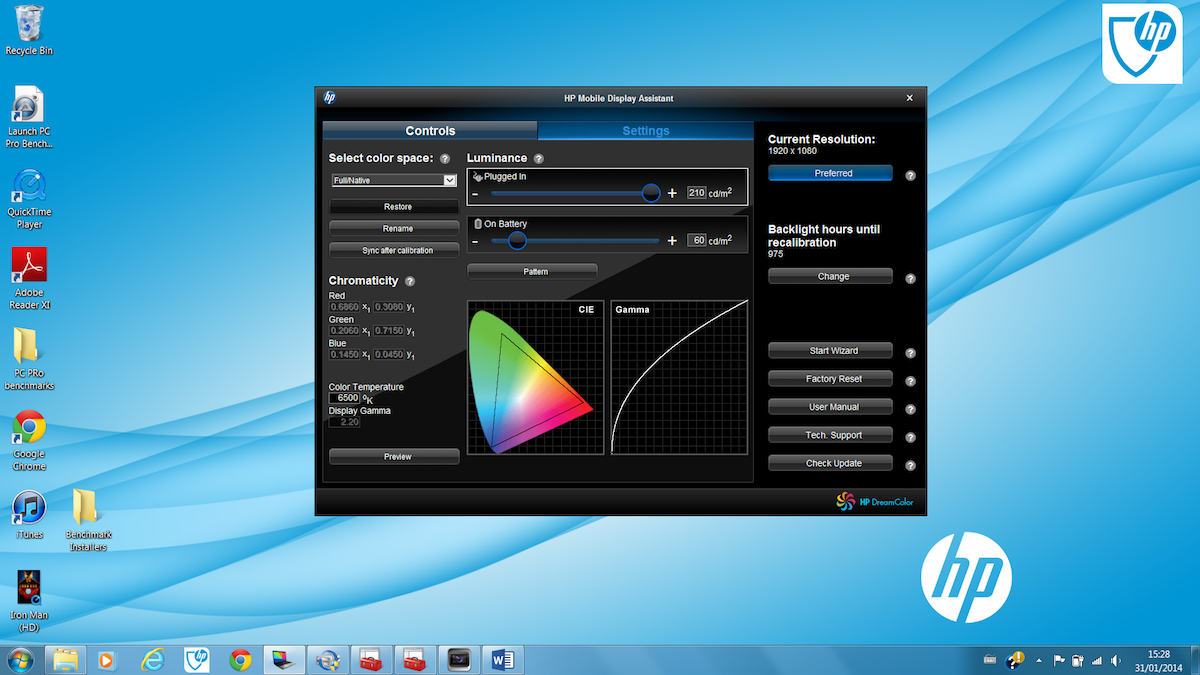HP zBook 15 review
A powerful laptop with a Core i7 processor, up to 32GB of RAM and discrete graphics from Nvidia.

The zBook 15 excels when it comes to performance and has a great screen. But it is bulky and has poor battery life, which makes it hard to recommend it as a portable machine.
-
+
Good performance; Decent screen; Thunderbolt port; Expandable
-
-
Cramped keyboard; Poor battery life; Expensive
Powerhouse performance
Our review unit packed a quad-core Intel Core i7-4700MQ processor (2.4GHz). There's no option for Xeon processors though, which means it won't be offering you the same performance as a desktop workstation such as the HP Z1 or the late-2013 Mac Pro.
We had 8GB of RAM preloaded, and the zBook 15 is capable of supporting up to 32GB of memory. Graphics power was provided by an Nvidia K2100M, which had 2GB dedicated GDDR5 RAM. This is the highest discrete graphics options available.
The specification looked great on paper and, thankfully, didn't disappoint in our real-world benchmarks. The zBook 15 matched the performance of our reference machine with a score of 100.

It excelled at the multimedia benchmarks - rendering photos, music and video - with a score of 104.
Our review unit had two SSDs set up in a Raid 0 configuration - an attempt to boost the performance. Using the AS SSD benchmark we got sequential read and write speeds of 142 MB/s and 101MB/s. This is a good deal faster than laptops with spinning disks, but is nowhere near the level of performance found in the latest MacBooks, which we also tested with the same software using Windows via Bootcamp.
Display
The 15.6in panel on the zBook is another standout feature designed for professional use. The LED-backlit screen comes with an anti-glare coating and a full HD resolution of (1920 x 1080). Panel Self-Refresh (PSR) technology is also included to help extend battery life - but as you'll see later this doesn't make much difference.
We measured a reasonable maximum brightness of 210 cd/m2. But where the zBook really shines is through the on-screen calibration. HP's Mobile Display assistant shows you key features such as the brightness, colour temperature and Gamma. You can also select the colour space depending on what you are using the device for. It's possible to set it to full colour, Adobe RGB, sRGB (printing), Rec. 601 (SD content), Rec. 709 (HD broadcast, DVD, Bluray) and DCI P3 emulation (digital cinema).

Get the ITPro daily newsletter
Sign up today and you will receive a free copy of our Future Focus 2025 report - the leading guidance on AI, cybersecurity and other IT challenges as per 700+ senior executives
-
 M&S suspends online sales as 'cyber incident' continues
M&S suspends online sales as 'cyber incident' continuesNews Marks & Spencer (M&S) has informed customers that all online and app sales have been suspended as the high street retailer battles a ‘cyber incident’.
By Ross Kelly Published
-
 Westcon-Comstor unveils new managed SOC solution for Cisco partners
Westcon-Comstor unveils new managed SOC solution for Cisco partnersNews Powered by Cisco XDR, the new offering will enable partners to tap into new revenue streams, the company said
By Daniel Todd Published
-
 More than 5 million Americans just had their personal information exposed in the Yale New Haven Health data breach – and lawsuits are already rolling in
More than 5 million Americans just had their personal information exposed in the Yale New Haven Health data breach – and lawsuits are already rolling inNews A data breach at Yale New Haven Health has exposed data belonging to millions of people – and lawsuits have already been filed.
By Emma Woollacott Published